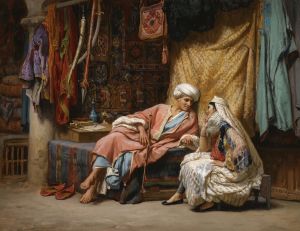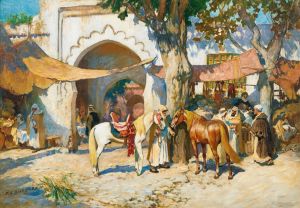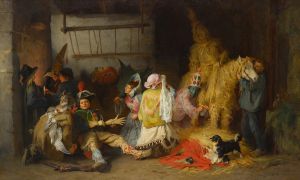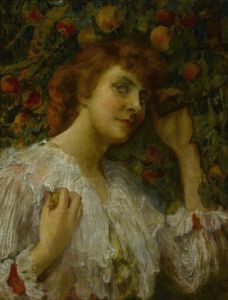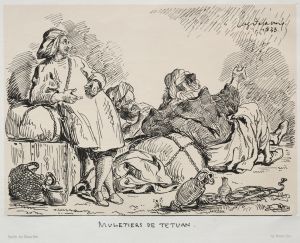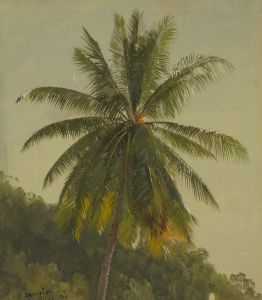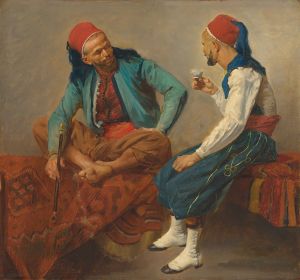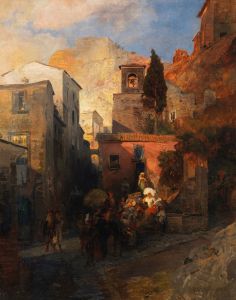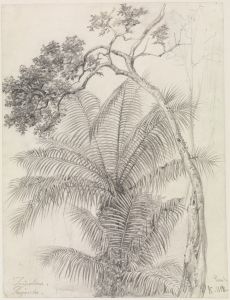
A view of an Algerian village
A hand-painted replica of Frederick Arthur Bridgman’s masterpiece A view of an Algerian village, meticulously crafted by professional artists to capture the true essence of the original. Each piece is created with museum-quality canvas and rare mineral pigments, carefully painted by experienced artists with delicate brushstrokes and rich, layered colors to perfectly recreate the texture of the original artwork. Unlike machine-printed reproductions, this hand-painted version brings the painting to life, infused with the artist’s emotions and skill in every stroke. Whether for personal collection or home decoration, it instantly elevates the artistic atmosphere of any space.
"A View of an Algerian Village" is a painting by the American artist Frederick Arthur Bridgman. Bridgman, born in 1847 in Tuskegee, Alabama, was a prominent figure in the Orientalist movement, which was characterized by Western artists depicting scenes from the Middle East, North Africa, and Asia. Bridgman is particularly known for his detailed and romanticized portrayals of North African and Middle Eastern life.
Frederick Arthur Bridgman traveled extensively in North Africa, particularly in Algeria, during the late 19th century. His travels provided him with a wealth of material and inspiration for his artworks. Bridgman’s fascination with the region is evident in the meticulous detail and vibrant colors he used to capture the essence of the landscapes, architecture, and people.
"A View of an Algerian Village" is one such painting that reflects Bridgman’s deep engagement with Algerian culture and scenery. The painting depicts a serene village scene, characterized by traditional North African architectural elements and a tranquil atmosphere. The composition typically includes whitewashed buildings with flat roofs, narrow winding streets, and perhaps figures dressed in traditional attire going about their daily activities. The use of light and shadow in the painting highlights the bright, sunlit environment typical of the region.
Bridgman’s work is noted for its ethnographic accuracy and attention to detail, which he achieved through his direct observations and sketches made during his travels. His paintings often provide a glimpse into the everyday life and customs of the people he encountered, making them valuable historical records as well as works of art.
Throughout his career, Bridgman exhibited his works in prestigious venues, including the Paris Salon, where he received critical acclaim. His paintings were well-received for their technical skill and the romanticized yet respectful portrayal of foreign cultures. Bridgman’s contributions to the Orientalist genre have been recognized as significant in the context of 19th-century art, offering insights into Western perceptions of the East during that period.
"A View of an Algerian Village" exemplifies Bridgman’s ability to blend artistic skill with cultural observation, creating a work that is both aesthetically pleasing and informative. The painting remains a testament to Bridgman’s talent and his dedication to capturing the beauty and diversity of the places he visited.
Frederick Arthur Bridgman continued to paint and travel throughout his life, leaving behind a rich legacy of artworks that continue to be studied and admired. He passed away in 1928, but his paintings, including "A View of an Algerian Village," continue to be celebrated for their artistic and historical significance.






